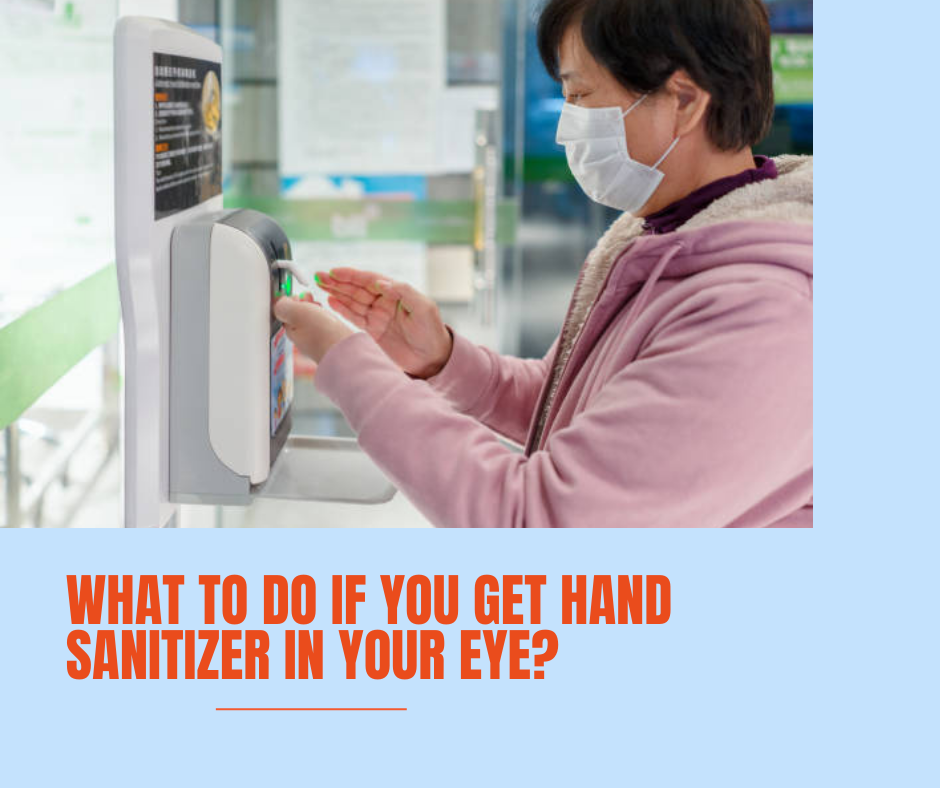Home » News and Events » What to Do If You Get Hand Sanitizer in Your Eye
What to Do If You Get Hand Sanitizer in Your Eye
Posted by: Florida Eye Microsurgical Institute in Worth Sharing...

The introduction of strict hand hygiene has become an essential part of our daily habits. It has also created new challenges for our eyes with the rise of eye accidents from hand sanitizers coming in contact with the eye.
It is no surprise that there are sanitizer dispensers at every corner. We see them at the doctor’s office, grocery store, or gas station to ensure we keep our hands clean when soap and water are not conveniently available to minimize the spread of viruses. The CDC recommends using a hand sanitizer that contains an alcohol concentration of between 60-95% to be effective against viruses.
Eye irritation from hand sanitizer is a known concern, not just for children but also for adults. We have all heard that swallowing hand sanitizer can cause alcohol poisoning, but what happens if you get hand sanitizer in your eye? If this happens, we encourage you to continue to read the following information to empower your eye safety knowledge.
Eye Symptoms When Hand Sanitizer Has Entered Your Eyes
When hand sanitizer comes into contact with your eye, you will likely experience a burning sensation immediately. You may experience some other signs that you’ve got alcohol in your eyes either simultaneously or shortly after the reaction. These can include:
- Eye pain and irritation in the eye
- Burning or stinging
- Redness
- Blurred Vision
- Light Sensitivity
Symptoms may be more severe depending on which part of the eye was affected. If hand sanitizer comes in contact with the cornea (the transparent layer that covers the front of the eye), irritation may be more intense and cause further eye problems.
If a chemical or irritant of any kind enters the eye, it is vital to flush it out as quickly and carefully as possible. According to the American Academy of Ophthalmologists, if a large amount of hand sanitizer gets into the eye, complications include keratitis, an open sore on the eye, or corneal abrasions, a scratch on the surface of the eye.
What to Do If Hand Sanitizer Gets in Your Eye?
- Try to remain calm!
- Keep your hands away from your eye and avoid rubbing the eye to not get more solution in the eye.
- Quickly wash your hands with soap and water.
- If you are wearing contact lenses, remove them immediately.
- Run the affected eye(s) under lukewarm water for 10-15 minutes, rapidly blinking while the water runs.
- If only one eye is affected, lean your head in the direction of the affected eye.
- Gently pat dry with a clean towel.
Your eye might still be red or irritated, but less so than before. You should be as good as new within a few hours. If the eye symptoms persist, please contact us immediately or go to your nearest emergency room.
Eye Safety Tips To Avoid Hand Sanitizer Eye Injuries
Listed below are some simple basic eye safety practices to keep your eyes safe:
- Wash your hands frequently and encourage children to do the same.
- Avoid putting hand sanitizer dispensers at children’s ye height and coach your children on using hand sanitizer properly, whether distributed from a bottle, spray, or automatic dispenser.
- Use soap and water to wash your hands whenever possible. Hand sanitizer should be used only when you are on the go or when soap and water are not available.
- Make sure to rub the liquid sanitizer into your hands well before touching your face. If you need to touch your eyes, do so with freshly washed hands.
- Keep the nozzle of the bottle clear. A hardened solution can block parts of the nozzle and cause a forceful, upward squirt.
In addition to being cautious while using hand sanitizer, be sure to support your eyes’ health with annual comprehensive eye exams. Do not hesitate to contact us for concerns in-between eye exams.
